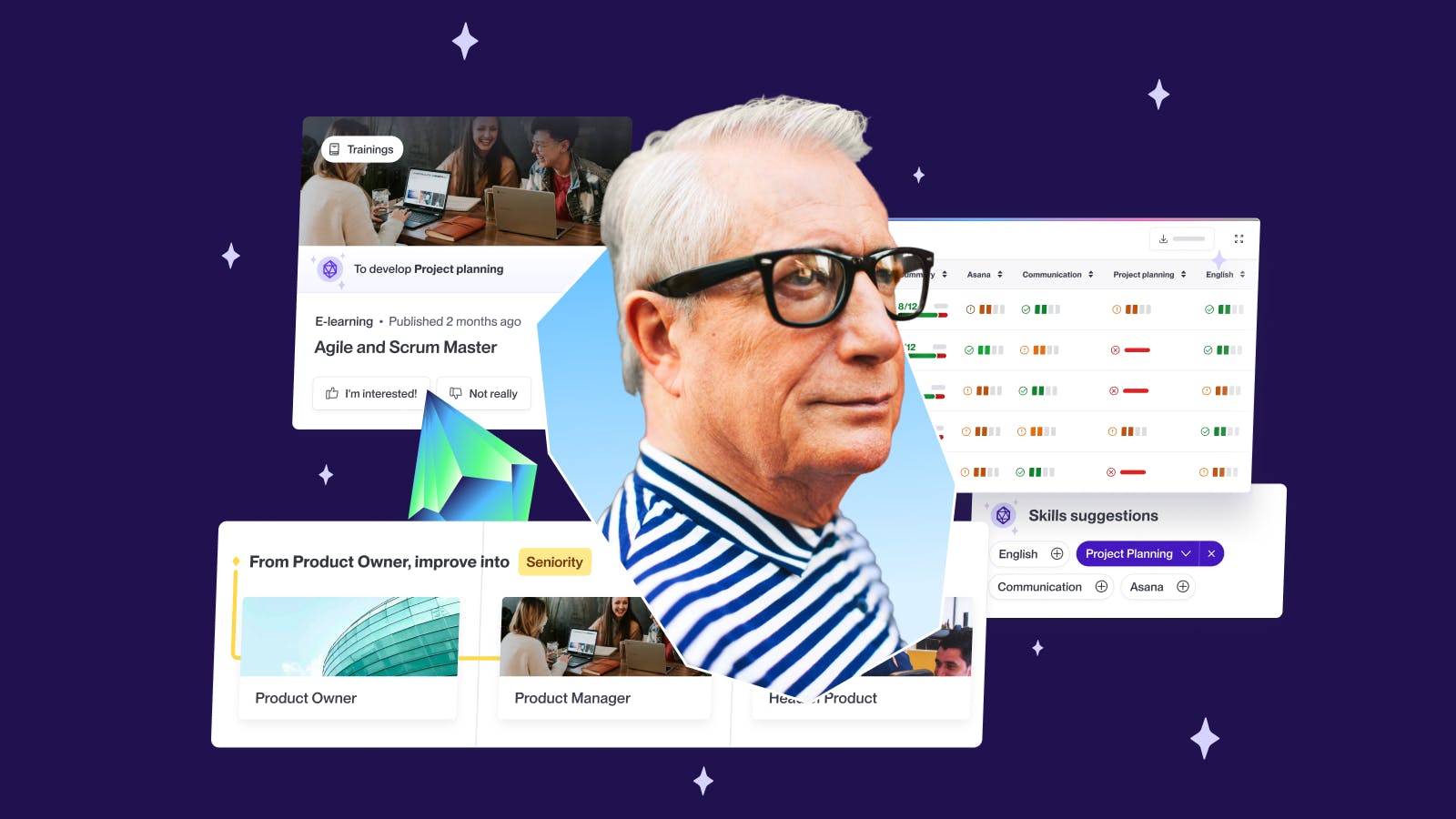How to Create a Skills-First Job Architecture
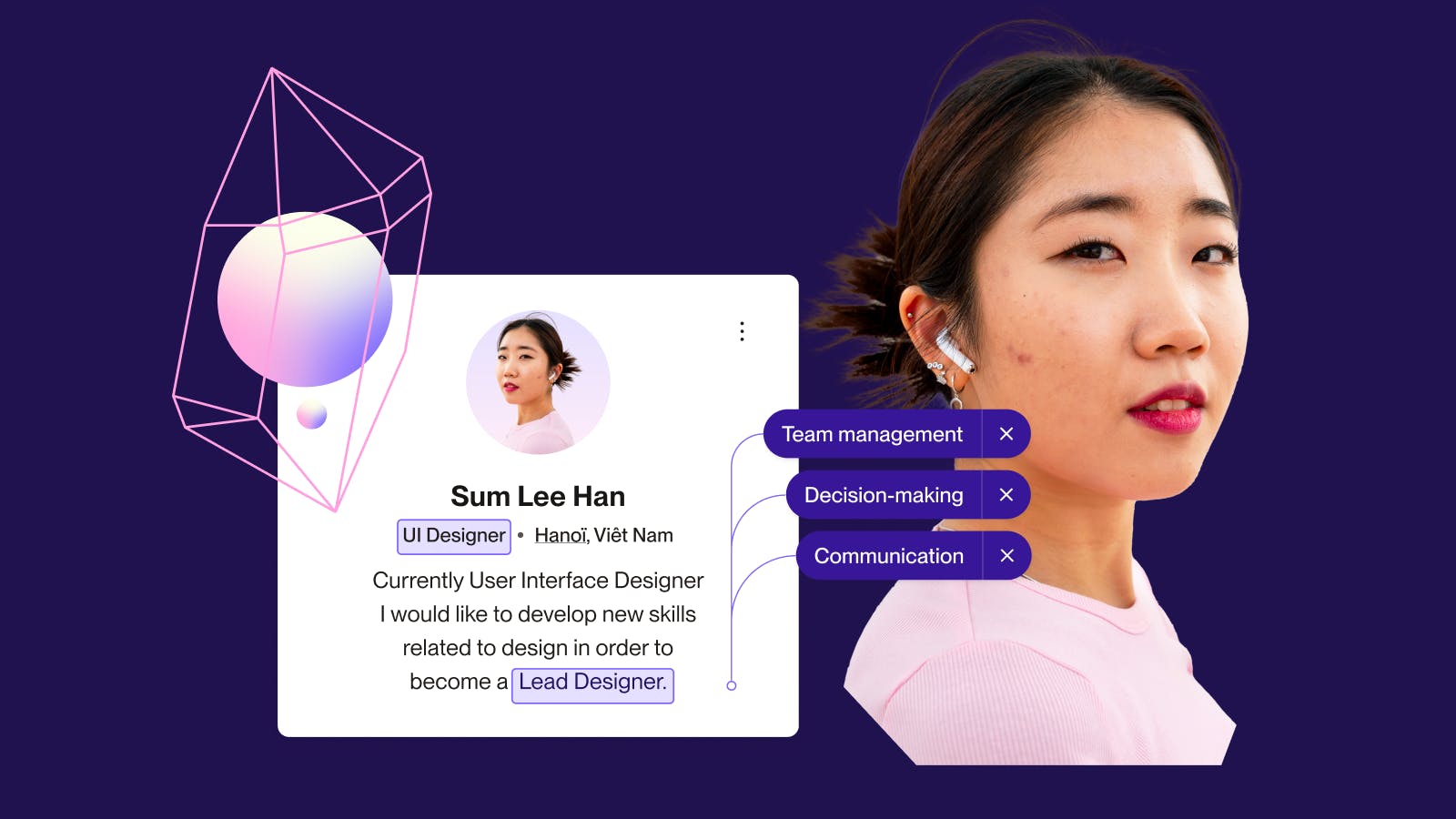
Work is evolving, and job titles no longer tell the full story. What truly matters are the skills your people have and how they can drive your business forward.
This is where a skills-first job architecture comes into play. By focusing on skills instead of just roles, you can unlock your team’s potential, make smarter talent decisions, and stay ready for the future.
In this guide, we’ll show you how to create a skills-first job structure that’s flexible, forward-thinking, and built to help your people and your business thrive.
Ready to get started? Let’s deep dive in!
A skills-first job architecture is a structured framework that organizes roles, career paths, and talent management strategies based on the skills required for success rather than traditional job descriptions. It involves identifying and classifying key skills across the organization, grouping jobs by the skills they require, and creating pathways for development and growth based on skill acquisition and mastery.
By adopting a skills-first approach, companies can better align their workforce with business needs, improve agility, and drive employee engagement and retention.








Why it’s important for your skills-based organization journey
A Skills-First Job Architecture is crucial for skills-based organizations as it shifts the focus from traditional job titles to the skills that truly drive success. In today’s evolving work environment, being flexible, addressing skill gaps, and helping employees grow is more important than ever.
1. Aligning talent with business strategy
Your organization's journey toward a skills-based model means you’re moving beyond job titles and traditional roles. A Skills-First job architecture helps you align your talent with what your business actually needs to thrive, making sure you have the right people with the right skills working on the right projects. This approach helps your company be more strategic and intentional in deploying its workforce.
2. More flexibility and adaptability
When you prioritize skills over rigid job titles, it’s easier for your organization to adapt to new challenges. A Skills-First setup allows employees to move between roles or projects based on what they can do, not just what their title says. This flexibility is key for businesses that need to innovate and quickly respond to market changes.
3. Bridging skill gaps faster
In today’s rapidly changing market, skill gaps can emerge quickly. A Skills-First mindset helps you identify these gaps early and fill them with the right talent, either by upskilling, reskilling, or hiring. You won’t have to wait for a job opening before taking action—you can move talent where it’s needed based on their skill sets.
4. Maximizing talent
Focusing on skills often reveals hidden talents that might otherwise go unnoticed. Employees may have skills that aren’t fully utilized because they’re stuck in traditional roles. A Skills-First approach uncovers these abilities, allowing you to get the most out of your team while cutting down on unnecessary external hires.
5. Boosting engagement and retention
When employees know their skills are valued and see opportunities for growth, they’re more motivated and likely to stay. A Skills-First architecture gives them a clear path to career development, which boosts engagement and helps retain top talent.
6. Smarter Workforce Planning
By understanding the skills your organization has—and the skills it will need in the future—HR can make better decisions about training, hiring, and development. This targeted approach ensures upskilling, reskilling, or recruitment efforts are directed where they’ll have the biggest impact, strengthening your strategic workforce planning.
7. Encouraging continuous Learning
A Skills-First mindset naturally promotes continuous learning. Instead of employees feeling boxed in by their job titles, they’re encouraged to keep developing their skills. This growth-oriented focus is especially important as businesses navigate changes like AI, automation, and digital transformation.
8. Fostering inclusion and diversity
When you focus on skills, you naturally widen your talent pool. Skills-based hiring and promotions cut through biases tied to education, previous job titles, or background, allowing you to bring in non-traditional candidates with the skills you need. This approach leads to more diverse, innovative teams.
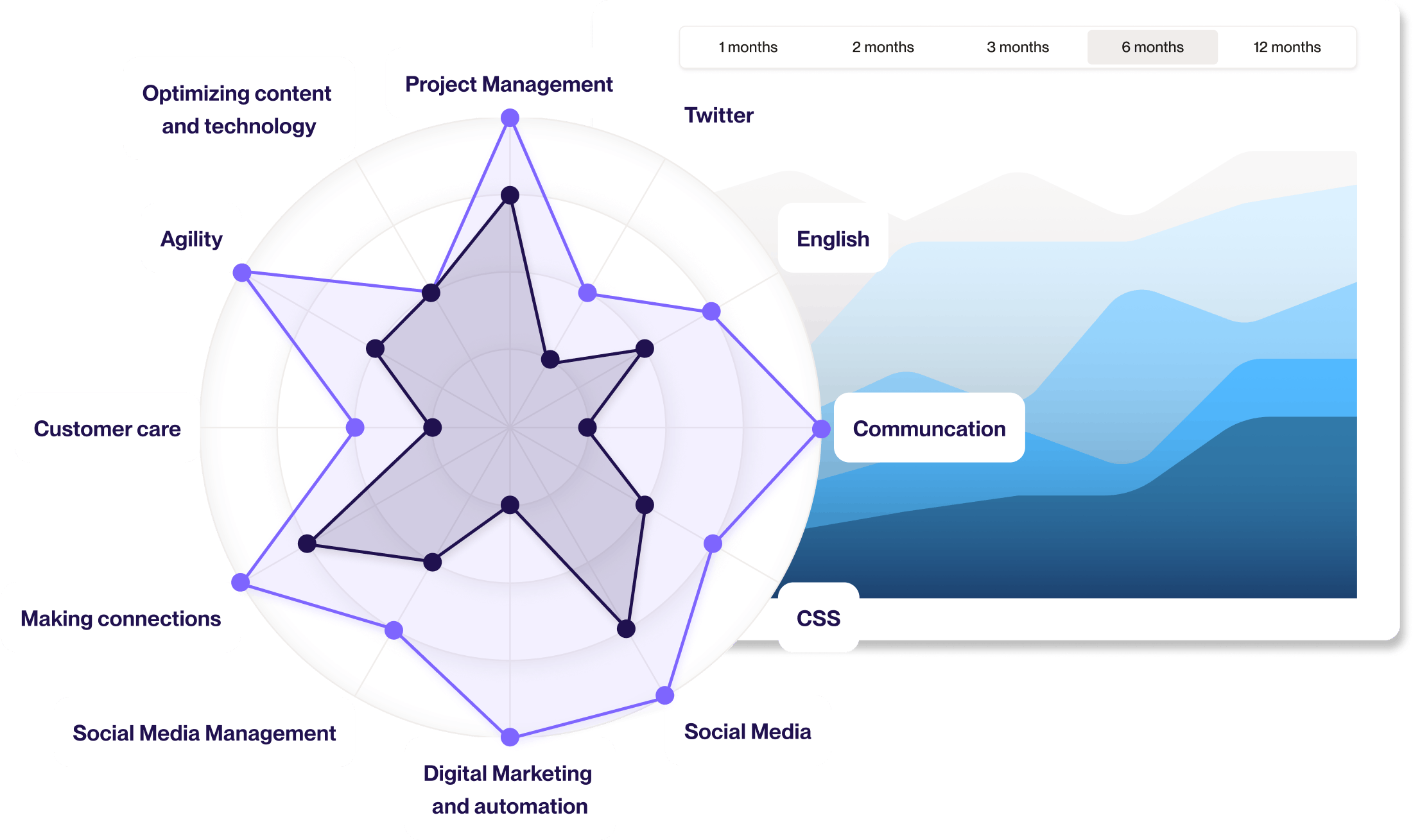
9 steps to create a Skills-First Job Architecture
1. Assess organizational needs and goals
Before creating a skills-first job architecture, start by evaluating your organization's strategic goals. Identify how your company is evolving, where it aims to grow, and what challenges it faces. Understanding these will guide you in identifying the critical skills necessary for future success.
Ask key questions like:
- What are our long-term business objectives?
- Which technologies or market trends are shaping our industry?
- What emerging skills will be essential in the next 3-5 years?
Aligning the skills-first architecture with these goals ensures your framework supports your organization's overall strategy.
2. Conduct a skills inventory
The next step is to conduct a skills inventory to map out the current skills within your workforce. This process involves identifying the skills employees already possess and estimating any skill gaps that could hinder organizational growth.
You can achieve this through:
- Employee self-assessments
- Managerial evaluations
- Skills assessments and tests
- Performance reviews
Categorize the skills based on proficiency levels (e.g., beginner, intermediate, advanced) and document them in a centralized system for easier access and analysis. This skills mapping will act as a baseline for understanding your workforce's current capabilities.
3. Define core skills and competencies
Once you’ve completed your skills inventory, you’ll need to define the core skills and competencies essential for your organization’s key functions. Core skills are the foundational skills employees need across the organization, while competencies are more role-specific and tied to success in particular functions.
Some ways to identify core skills include:
- Reviewing strategic priorities to align skills with future goals
- Collaborating with department heads to identify critical role-specific skills
- Analyzing industry trends to identify emerging skill sets
Organize these skills into a skills taxonomy, a structured list that categorizes all required skills into groups based on function or discipline (e.g., technical, leadership, communication, project management, etc.).
4. Group jobs by skills, not job titles
In a skills-first job architecture, jobs are grouped based on shared or complementary skills rather than traditional job families. This allows for greater flexibility and fluidity in talent management. Instead of rigid job titles and descriptions, jobs are categorized by their core and adjacent skills.
For example:
- Technical roles may be grouped by proficiency in coding languages, data analysis, or cloud technologies.
- Customer-facing roles may emphasize communication, problem-solving, and relationship management skills.
This approach helps create a dynamic environment where employees can move between roles or departments based on their skill sets, promoting internal mobility and cross-functional collaboration.
5. Develop career paths and Learning plans
One of the key benefits of a skills-first approach is that it provides employees with clear career pathways based on skill acquisition. These pathways are not limited by traditional job titles or hierarchies. Instead, they are flexible routes that allow employees to transition into different roles by learning new skills.
Create skills-based career maps that show employees the skills they need to advance to different levels or switch to other departments.
For each role or job group, define:
- The key skills required for success
- The expected proficiency levels for each skill
- Training or development opportunities available to help employees advance
Providing employees with personalized upskilling and reskilling plans tied to specific career goals boosts engagement and retention, as it empowers them to take control of their professional growth.
6. Leverage technology and AI-driven platforms
Creating and managing a skills-first job architecture can be complex without the right technology. HR platforms powered by AI can simplify the process of tracking, analyzing, and managing skills data.
These platforms help:
- Automate skills assessments and skill gaps analysis
- Provide personalized learning recommendations for employees
- Predict future skill needs based on industry trends and business goals
- Enable real-time tracking of skills progress and performance
By leveraging AI and HR technology, you can continuously optimize your skills-first job architecture and ensure it remains agile and aligned with your organization's changing needs.
7. Integrate skills into talent acquisition
A skills-first job architecture naturally feeds into your talent acquisition strategy. Rather than hiring for specific job titles or degrees, focus on hiring candidates with the right skills. When developing job postings and recruitment criteria, make skills the primary qualification for the role.
For instance, instead of requiring 5 years of experience in a specific job, prioritize candidates with demonstrated skills such as project management, problem-solving, or proficiency in a particular software. This skills-first approach expands your talent pool and fosters inclusive hiring by welcoming candidates from diverse backgrounds who have the right skills but may not have followed traditional career paths.
8. Foster a skills-based culture
A successful transition to a skills-first job architecture requires a cultural shift. Encourage a mindset where continuous learning and skill development are central to organizational success.
This means:
- Offering ongoing training, mentoring, and development opportunities
- Celebrating and rewarding employees for acquiring new skills
- Encouraging cross-functional collaboration to help employees build diverse skills
A skills-based culture creates an environment where employees feel supported in their professional development, leading to higher engagement and retention.
9. Continuously assess and adjust
Skills need to evolve over time, so your skills-first job architecture should be regularly assessed and updated to reflect changing business demands and industry trends. Use skills data to continuously monitor progress, adjust career pathways, and identify new skill gaps.
You can set up a system for regular feedback from managers and employees to ensure that the architecture remains relevant, practical, and aligned with both organizational goals and individual career development.
How 365Talents can help you build your job architecture easily?
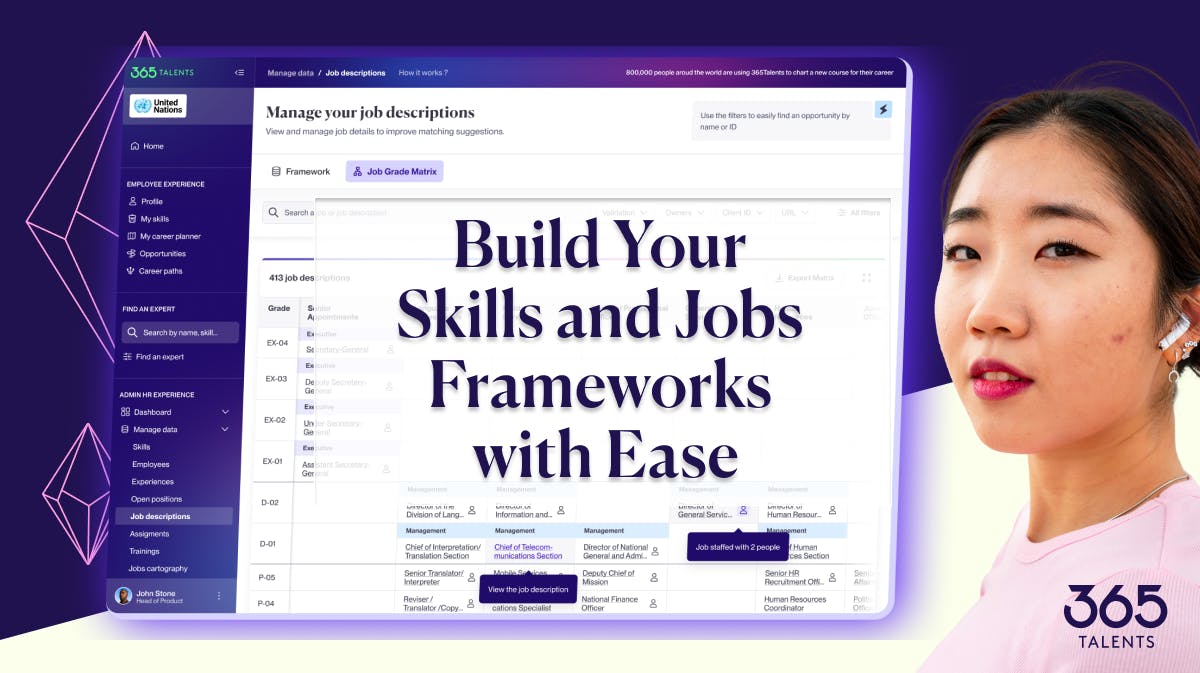
Centralizing and building your job and skills data
How does it work?
Step 1: Centralize job data
365Talents consolidates all job-related information into a single, centralized hub, bringing together various job titles, descriptions, and classifications.
Our AI algorithms analyze job titles, identify similarities, and map them to corresponding roles, creating your initial job architecture without duplication or mismatched data.
Step 2: Generative AI for job descriptions
When job descriptions are missing, our Generative AI steps in to automatically draft accurate descriptions based on job titles and specifications, ensuring that every role is fully documented.
The value: This process creates a unified job framework for all roles, simplifying management and ensuring consistency. The ability to instantly generate job descriptions saves time and effort, particularly for HR teams managing large volumes of data.
From job architecture to AI-powered skills ontology
How does it work?
Skills ontology and extraction
365Talents leverages its proprietary AI to automatically extract key skills for each role. The platform analyzes job descriptions, identifying and clearly defining essential skills and proficiency levels for every position.
Additionally, we centralize all your existing skills data, helping you create your first skills ontology. This foundation will be continuously enriched with employee declarations and evolving market data.
What sets us apart is our ability to benchmark your roles against market trends. Our AI analyzes industry data to recommend emerging, critical, and scarce skills that may be missing from your workforce.
The value: Our solution delivers a detailed, AI-driven skills framework that aligns with your organization’s needs and market trends. It enables you to stay ahead by incorporating emerging skills into your workforce planning.
Data visualization and analysis
How does it work?
Our AI algorithms analyze the proximity between skills and roles, offering insights into potential career paths for employees while providing a comprehensive view of the entire job galaxy, with each respective relation, within your organization. This not only fosters internal mobility and career development but also expands recruitment possibilities.
The platform further delivers a detailed analysis of skill distribution across functional, organizational, and geographic levels for each job description and the relevant population. This allows HR teams to optimize recruitment and training strategies by identifying areas where skills are over- or under-represented.
Faster skills gap resolution
Ensure your employees have the right skills and competencies to excel in their roles.
For each job, the platform shows not only all employees in that role but also a detailed analysis of skill gaps for each employee. This enables you to quickly identify and address any skill shortages, ensuring employees are equipped for success.
The Value: Promotes career development and internal mobility by uncovering new connections between roles. Enables organizations to make data-driven decisions for recruitment, training, and workforce development.
To learn more about our Skills and Job architecture solution, book a demo here!
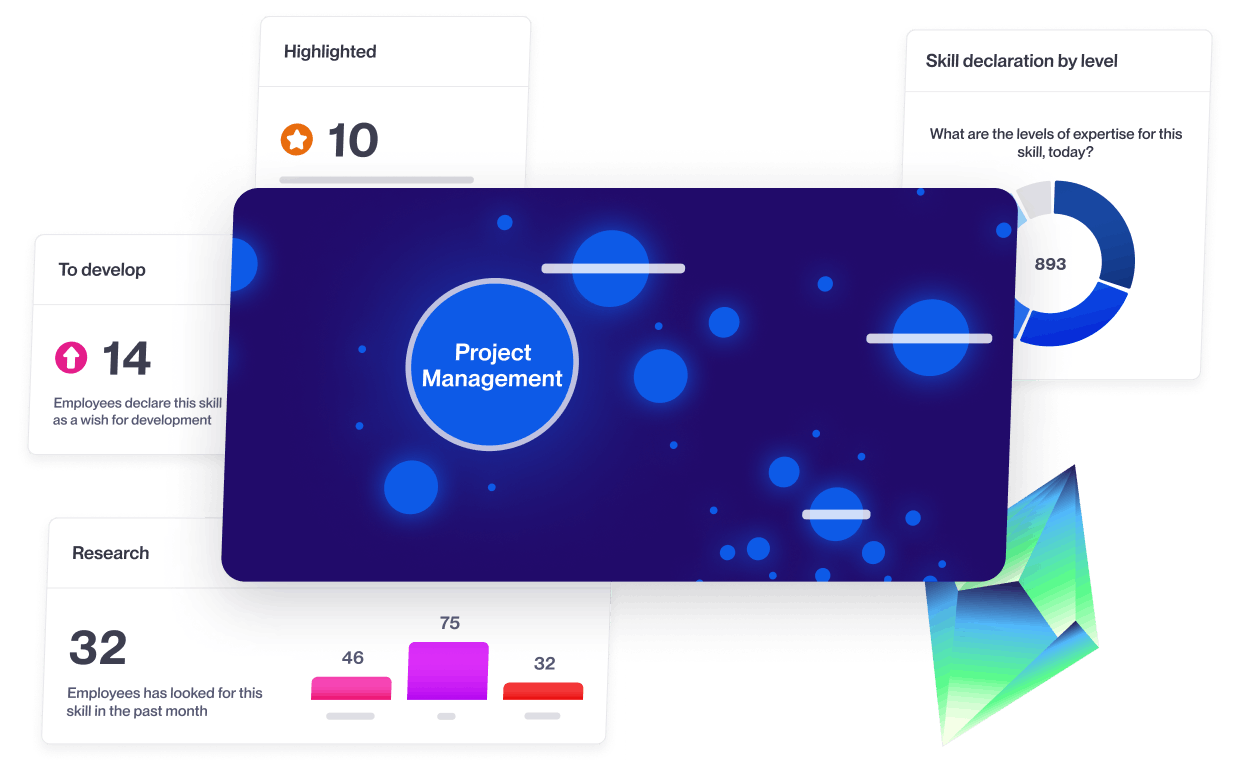
In conclusion
A skills-first job architecture transforms how organizations approach talent management, making it possible to align workforce capabilities with future business goals while fostering internal mobility and employee growth. By focusing on skills, companies can unlock new opportunities for agility, innovation, and long-term success. HR leaders who implement this framework will create a flexible, engaged workforce equipped to handle the evolving demands of the marketplace.
In a few words: a skills-first approach is the key to building a future-ready organization.
Discover more HR insights








